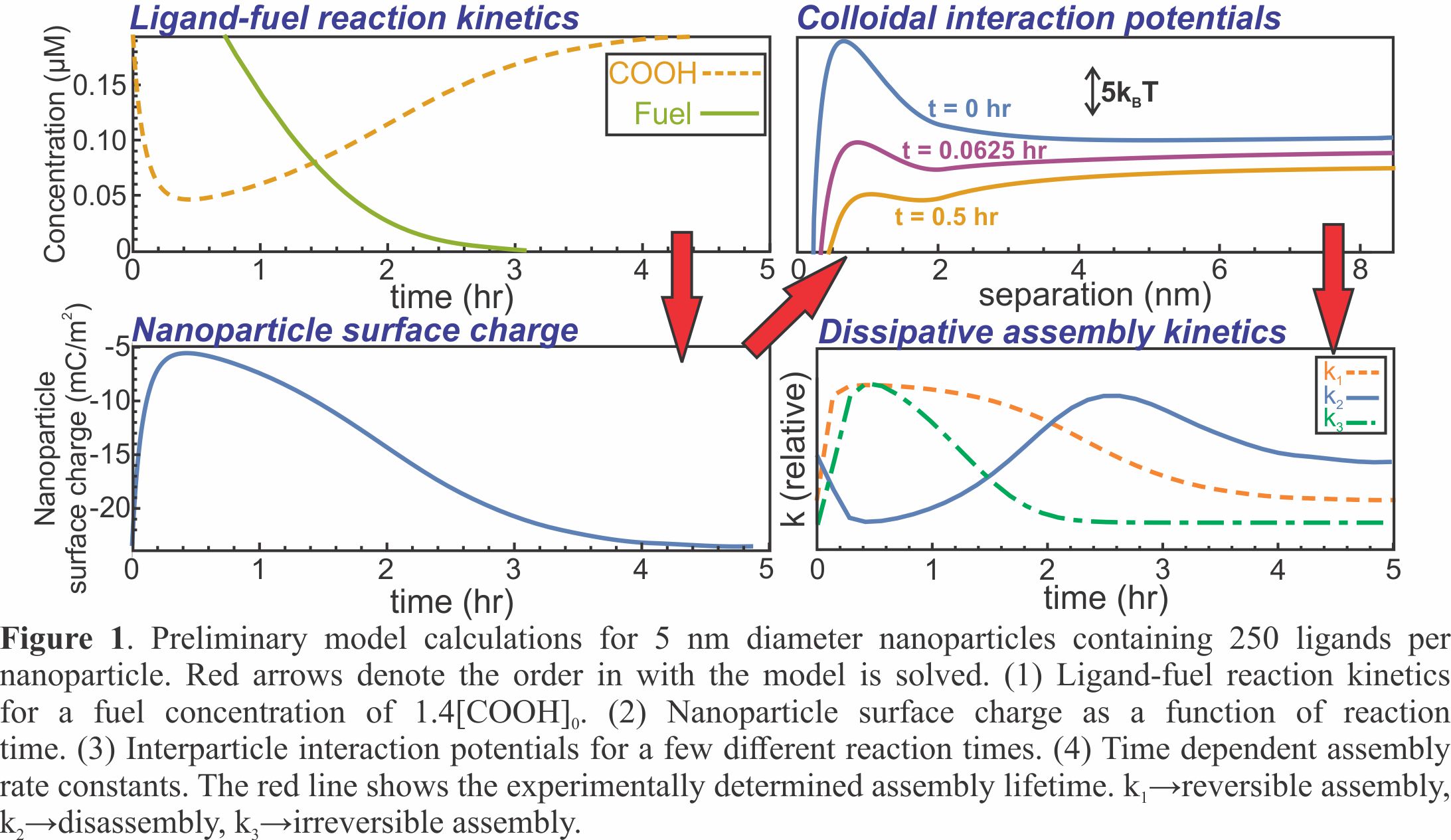(183e) A Colloidal Stability Model for Fuel Driven Dissipative Assembly of Hydrophobic Colloids and Nanoparticles
AIChE Annual Meeting
2020
2020 Virtual AIChE Annual Meeting
Engineering Sciences and Fundamentals
Directed and Self Assembly of Colloids
Tuesday, November 17, 2020 - 9:00am to 9:15am
Here we demonstrate a coupled reaction kinetic and colloidal stability model for dissipative nanoparticle assembly (Figure 1). The model combines a reaction kinetic model for fuel-ligand reactions along with a colloidal stability model based on pairwise interparticle interactions. The reaction kinetic model determines the time-dependent concentration of charged hydrophilic surface ligands and reveals that ligands are rapidly converted to uncharged hydrophilic groups, which reach a peak concentration within 1 hour of adding the chemical fuel. We utilize the time-dependent concentration of charged ligands to calculate the time dependent surface charge of the nanoparticles. The pairwise interparticle interaction potential is then calculated as a function of time based on the surface charge. The model shows that for fuel concentrations that lead to dissipative assembly, a secondary minimum emerges about an hour after fuel is added, which causes loose aggregates to form. Fuel to ligand ratio is observed to control the emergence of the secondary minimum and an energy barrier to irreversible aggregation, both of which are required for dissipative assembly. The model predicts assembly and disassembly kinetics with a two-stage colloidal aggregation model to determine the rate constants for assembly, disassembly, and irreversible aggregation and show this model can estimate the lifetime of colloidal assemblies formed during dissipative assembly. The model is compared to experiments on micron-scale polystyrene colloids.
